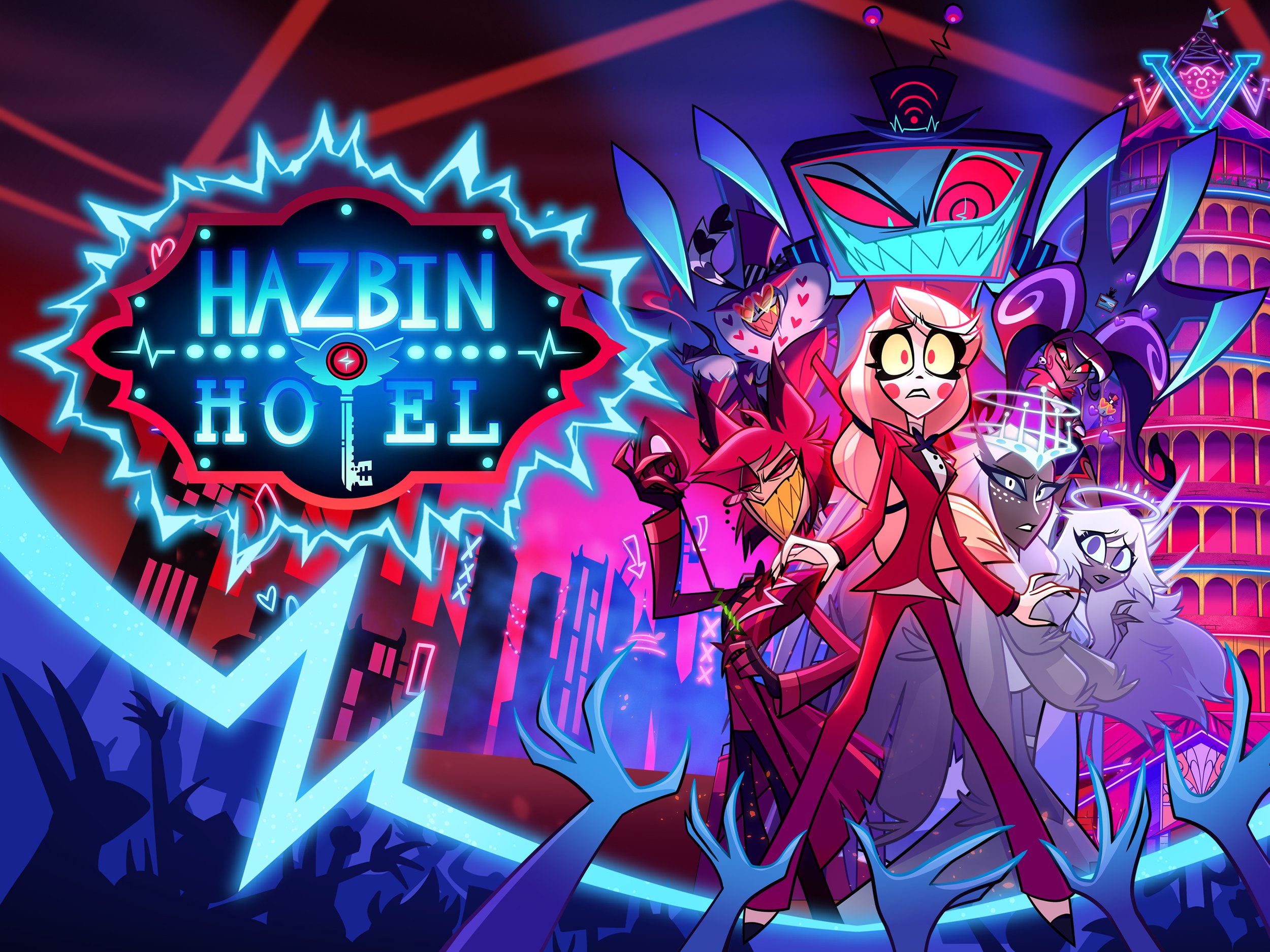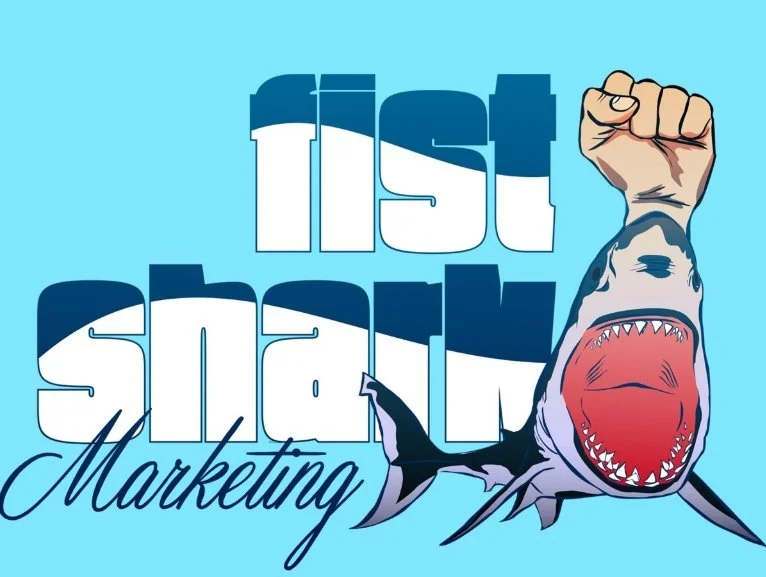Why We Laugh at Horrible People: The Psychology Behind FistShark Marketing’s Dark Humor
FistShark Marketing is a workplace from hell, yet listeners can’t stop laughing. This piece unpacks the psychology behind that reaction, revealing how cognitive dissonance, moral disengagement and sheer absurdity turn corporate cruelty into irresistible dark comedy.
The world of FistShark Marketing is not merely unethical. It is a moral sinkhole with fluorescent lighting. The executives of this fictional PR firm, played by Stephanie Sterling, Conrad Zimmerman, Caitlin Cooke and Jonathan Holmes, stroll into each improvised episode with the breezy confidence of people who have never considered the value of a human soul. They brainstorm marketing campaigns for products that should be destroyed on sight. They exploit celebrities with cheerful indifference. And at the center of it all is Craig the Intern, a man whose job description appears to be “sentient stress ball.”
What makes this remarkable is not that the characters behave so horrifically. It is that listeners laugh. Repeatedly. Sometimes helplessly. Sometimes in ways that make them question their own decency. FistShark Marketing offers a strange cocktail: corporate satire, surreal horror, improvised cruelty, and a cast whose capacity for moral disengagement is so vast it probably qualifies as a performance art piece.
To understand why the show’s audience responds with laughter instead of revulsion, we have to examine the psychological machinery operating beneath the jokes. Cognitive dissonance makes us squirm until laughter becomes a pressure release. Moral disengagement allows us to treat the suffering as symbolically harmless. And incongruity theory gives the show its comedic power by turning depravity into something structurally elegant. Mix these with the show’s long-running storylines, from Caitlin’s death-dive with Willem Dafoe to the Lovecraftian break-room horrors, and you get a masterclass in dark humor.
This is not wholesome comedy. This is the laughter that emerges when sanity packs a bag and leaves the office.
The Surreal Office From Hell
Before diving into psychology, we need to appreciate the specific nature of FistShark’s darkness. Plenty of comedies mock corporate life. FistShark goes further. It imagines a world where HR departments fear ancient monsters in the break room, celebrities wander into the office seeking humiliating reinvention, and the executives have accepted tormenting Craig as a strategic pillar of their business model.
This surreal rot becomes uncannily charming because the executives treat it as normal. When Caitlin Cooke tackles Willem Dafoe out of a window in Episode 50, her dying curse is not an apology or a profound final thought. It is an order to “mess up Craig.” When Paulson Sear joins the team six episodes later, his earnest morality is treated as a suspicious defect. When he is eventually murdered during an arranged political marriage ceremony in Episode 100, the tone is less tragedy and more corporate inconvenience.
This is the landscape the audience enters. A world so ethically inverted that cruelty feels like a natural resource.
The question is why we enjoy it. Why does this nightmare workplace produce laughs instead of nausea?
Cognitive Dissonance: Laughter as Mental Whiplash
Cognitive dissonance describes the psychological discomfort that arises when two beliefs collide. FistShark Marketing weaponizes this discomfort. The show places moral certainty directly against comedic structure, then stands back and waits.
On one hand, listeners know Craig is being abused. They know the executives are monsters. They know that marketing campaigns involving cursed objects, forced marriages, and Dean Cain-related hazards should not be pitched under any circumstances.
On the other hand, the rhythm of the improv is so casual and the delivery so earnest that the brain recognizes the scene as a comedy. The result is tension. The moment the tension peaks, laughter slips out.
When the characters Jim and Conrad calmly discuss turning a workplace haunting into a monetizable brand opportunity, the joke does not work because the idea is clever. It works because the audience’s sense of normalcy has been yanked in opposite directions at once. Their moral compass says “no,” the comedic timing says “yes,” and laughter becomes the only available compromise.
This is the heart of dark humor. It makes people laugh not because they approve of the content but because the psychological friction becomes unbearable. The show knows this, plays with it, and escalates until the dissonance itself becomes the punchline.
Moral Disengagement: Fiction as Ethical Freezer Space
If cognitive dissonance creates the spark, moral disengagement maintains the flame. In real life, watching someone get abused would be sickening. In fiction, particularly fiction this exaggerated, the emotional stakes shrink until the cruelty becomes abstract.
FistShark makes moral disengagement effortless. The violence is cartoonish. The characters are self absorbed to an inhuman degree. Even the consequences feel mythic rather than literal. Craig survives torments that would kill any real person, which signals to the audience that his suffering is narrative currency rather than genuine injury.
This suspension of moral judgment is reinforced by the setting. The firm is the world’s most morally bankrupt PR agency. Its very identity is built on unethical behavior. When a place is established as a nightmare, the audience stops expecting moral coherence and begins treating everything as hyperbolic satire.
This is why the show can kill a major character like Caitlin, auction off her remains, replace her with Paulson, and then kill him too without losing the audience. The fiction has signaled repeatedly that human life is as disposable as office supplies. Moral disengagement allows the audience to laugh because the show has clearly departed from any recognizable moral universe, yet still fundamentally recognisable which in tern feeds back into the cognitive dissonance of the show.
Incongruity Theory: Evil in a Conference Room
Incongruity theory argues that humor arises from collisions between expectation and reality. FistShark thrives on this mechanism. Every scene is a mismatched pairing of ordinary corporate structure and catastrophic madness.
A normal executive meeting would involve metrics, deliverables, and client needs. A FistShark meeting might involve redesigning edible underwear to incorporate nostalgic flavours, such as salt and vinegar or negotiating with demonic entities in supply chain management. The executives rarely acknowledge the absurdity, which makes the incongruity even sharper. They use professional tone and strategic language to describe scenarios that should trigger emergency evacuations.
This commitment to the bit is where the comedy lives. Jim and Conrad treat Craig’s political marriage, for example, as if it were a logistical challenge rather than an atrocity. They treat Lovecraftian break-room monsters like HVAC issues. They treat Robin Thicke’s monster transformation as a branding opportunity. When characters behave as though the unacceptable is mundane, the mind recognizes the mismatch and responds with laughter.
Why Horrible Characters Become Weirdly Endearing
Perhaps the strangest psychological effect of FistShark is that its villains become charming. Jim and Conrad are not likable in any moral sense, but their enthusiasm for bad ideas is magnetic. Their banter feels like the only stable thing in a collapsing universe. They are predictable in their depravity, and predictability can be comforting even when it is evil.
Craig becomes the emotional anchor by contrast. His suffering gives the world structure. His survival gives the audience relief. He is the Sisyphus of modern marketing, doomed to endless torment but valuable precisely because he endures. His presence makes the executives’ cruelty feel less sharp because he never truly breaks.
Even Paulson Sear, whose brief tenure represents the show’s only real moral conscience, becomes a symbol. His downfall proves that virtue cannot survive in this corporate ecosystem, which is darkly funny because it reframes goodness as the real threat. In a world this corrupt, decency looks like a hostile takeover.
Simply Put
Dark humor creates community. It functions like a social identity test. Those who appreciate it share a kind of moral flexibility or at least an understanding that morality can be suspended in fictional space.
FistShark Marketing encourages this bond. Listeners become insiders who recognize the show’s signals. They know that cruelty is fictional. They know that the horror is satire. They know that the office is not a workplace but a stage for exploring corporate absurdity through the lens of pure chaos.
Laughing at horrible people does not make the audience horrible. It makes them aware that humor can exist in the shadows as well as the light. And if the laughter sometimes feels a bit tainted, that is part of the appeal. Dark comedy is not meant to reassure. It is meant to challenge, provoke, and jolt the mind into unexpected places.
FistShark Marketing succeeds because it understands this. It turns moral collapse into entertainment, transforms trauma into punchlines, and invites the audience to explore their own psychological boundaries. We laugh not because the cruelty is acceptable but because the absurdity is irresistible.
And perhaps because a small part of us recognizes the unsettling truth. In a world where real corporations often behave with shocking indifference, FistShark’s nightmare logic does not feel entirely alien. It feels like a funhouse reflection of something uncomfortably familiar. The podcast exaggerates evil until it becomes safe to laugh at, but the satire lands because we already know the territory.
Dark humor works best when it tells the truth in a twisted way. FistShark Marketing tells it with a grin, a spreadsheet, and a long-suffering intern who has seen far too much.
References
Britannica. (n.d.). Black humor. Encyclopaedia Britannica.
Britannica. (n.d.). Groupthink. Encyclopaedia Britannica.
Festinger, L. (1957). A theory of cognitive dissonance. Stanford University Press.
Janis, I. L. (1972). Victims of groupthink. Houghton Mifflin.
Table of Contents
Editors Note: Although FistShark Marketing concluded its run in 2018, its spirit lives on in the cast’s later podcast Boston’s Favorite Son, which carries forward the same improvised absurdity in a fresh, unhinged setting. Though we still hold out hope that one day the team might return to the FistShark offices for a Christmas special or a one off reunion. After all, if any fictional PR firm deserves to rise from the ashes for one last ethically catastrophic meeting, it is surely this one.








